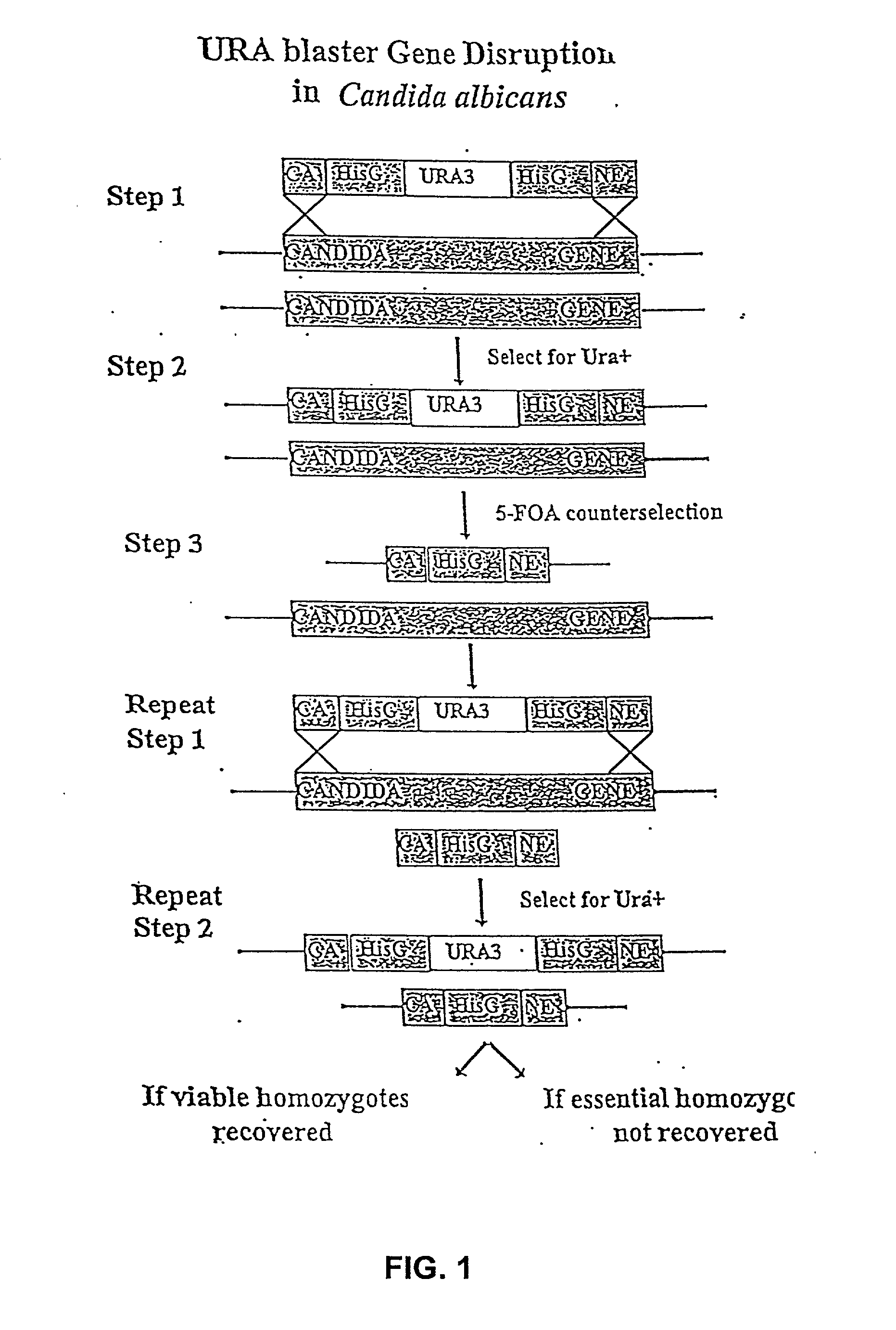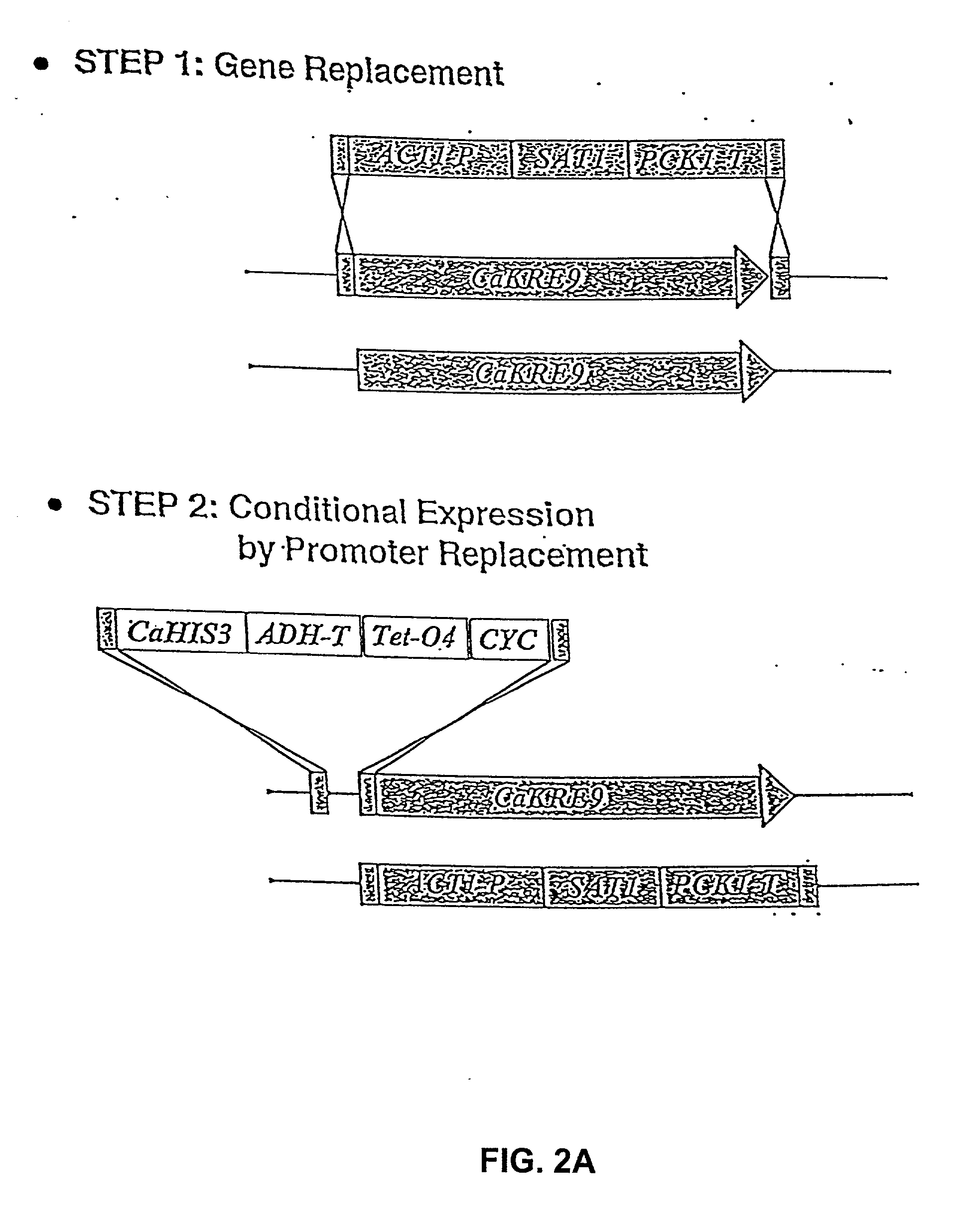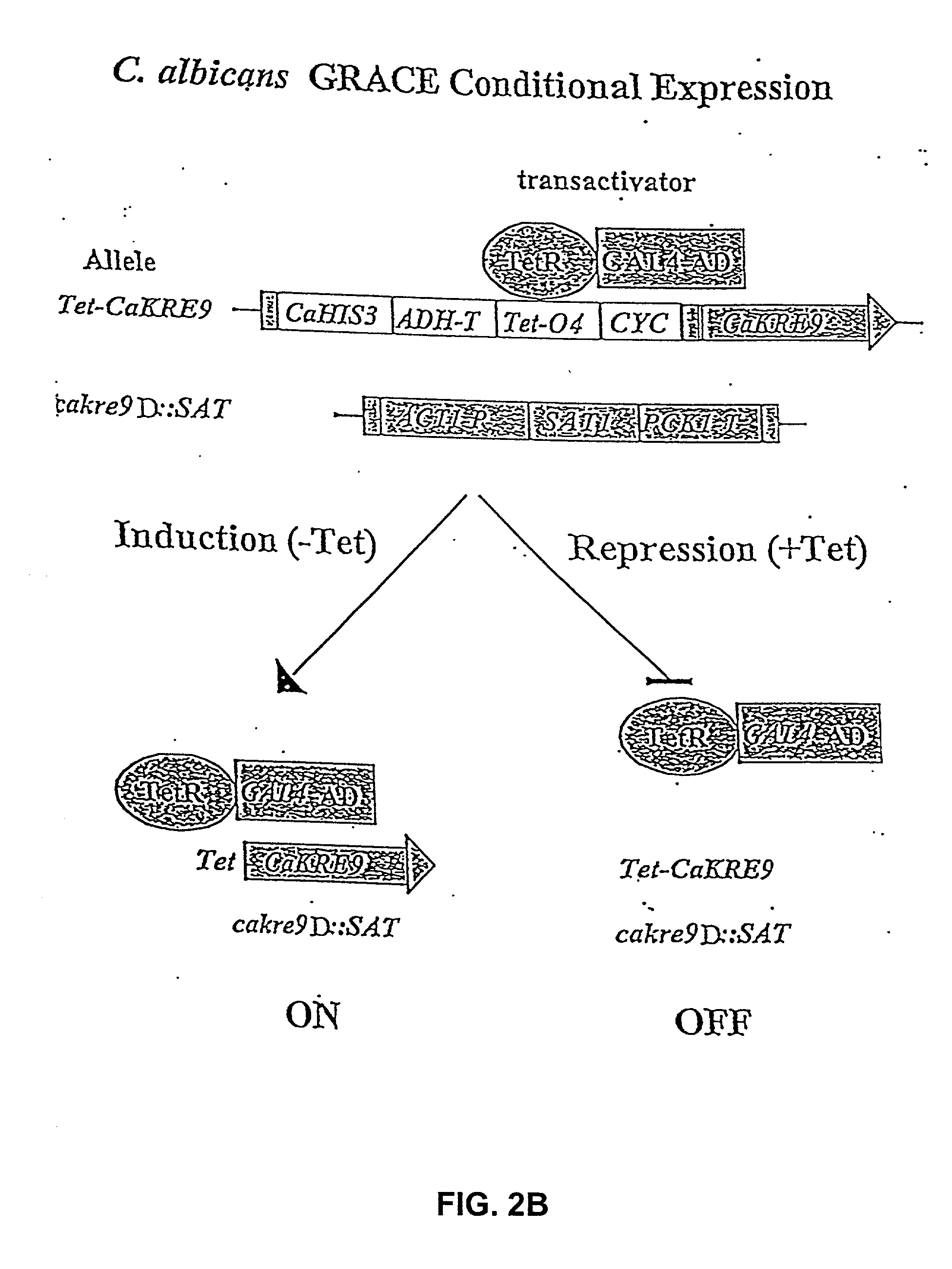Gene disruption methodologies for drug target discovery
a technology of gene disruption and drug discovery, applied in the field of gene disruption methodologies for drug target discovery, can solve the problems of affecting the identification of appropriate drug targets, affecting the identification of drug targets, etc., and achieves the effect of effective and efficien
- Summary
- Abstract
- Description
- Claims
- Application Information
AI Technical Summary
Benefits of technology
Problems solved by technology
Method used
Image
Examples
Embodiment Construction
[0035] 5.1 Gene Disruption and Drug Target Discovery
[0036] The present invention provides a systematic and efficient method for drug target identification and validation. The approach is based on genomics information as well as the biological function of individual genes.
[0037] The methods of the invention generates a collection of genetic mutants in which the dosage of specific genes can be modulated, such that their functions in growth, survival, and / or pathogenicity can be investigated. The information accrued from such investigations allows the identification of individual gene products as potential drug targets. The present invention further provides methods of use of the genetic mutants either individually or as a collection in drug screening and for investigating the mechanisms of drug action.
[0038] Generally, in gene disruption experiments, the observation that homozygous deletions cannot be generated for both alleles of a gene in a diploid organism, cannot, per se, support ...
PUM
| Property | Measurement | Unit |
|---|---|---|
| concentration | aaaaa | aaaaa |
| molecular weight | aaaaa | aaaaa |
| body temperature | aaaaa | aaaaa |
Abstract
Description
Claims
Application Information
 Login to View More
Login to View More - R&D
- Intellectual Property
- Life Sciences
- Materials
- Tech Scout
- Unparalleled Data Quality
- Higher Quality Content
- 60% Fewer Hallucinations
Browse by: Latest US Patents, China's latest patents, Technical Efficacy Thesaurus, Application Domain, Technology Topic, Popular Technical Reports.
© 2025 PatSnap. All rights reserved.Legal|Privacy policy|Modern Slavery Act Transparency Statement|Sitemap|About US| Contact US: help@patsnap.com



